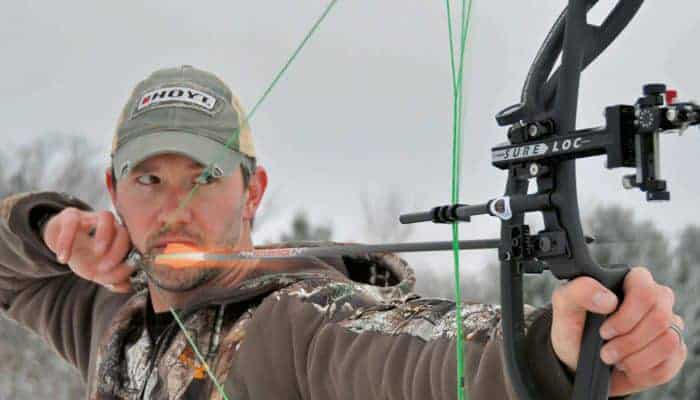What is draw length, how does an archer measure it and, why is it important?
Draw length is the distance from the back of the bow (the side facing away from the archer) to the apex of the bow string (aka “nock point”) when the bow is drawn to the archer’s anchor point (the place where the archer draws the arrow’s nock to on every shot) and the archer is holding the bow fully extended at arm’s length.
The best way to measure draw length is to nock an arrow on the string and draw the bow to your chosen anchor point.
Then, have an assistant mark the arrow shaft next to the leading edge of the bow’s riser at the front of the arrow shelf.

Then, you release the bow without firing the arrow and then you remove it from the bow and use a tape measure to measure the distance from the valley of the nock to the tip of the arrow minus the field point or broad head and that measurement is your draw length.
Now, the reason that measurement is important to know is because when purchasing arrows for a traditional or compound bow, your arrows need to be at least two inches longer than your draw length so that the blades of a broad head will extend beyond your fingers unless you are using an “overdraw” type arrow rest.
In this case, instead of the arrow rest sitting even with the plunger hole in the side of the sight window, it is instead positioned behind the riser on the belly side of the bow (the side facing the archer) even with the plunger hole and it enables an archer to use a significantly shorter, and lighter, arrow than they normally would which makes them faster.

The purpose of determining an archer’s draw length is to help determine the correct arrow length which, when combined with the field point or broad head weight, in turn helps to determine the correct arrow spine for a given draw weight, arrow length, and point weight so that the correct combination will be both smooth and accurate to shoot.
